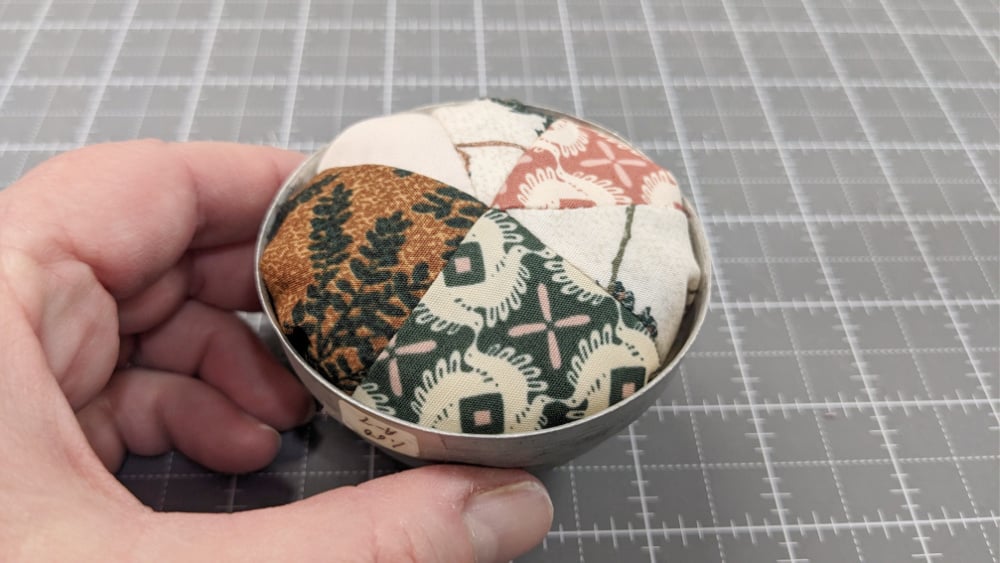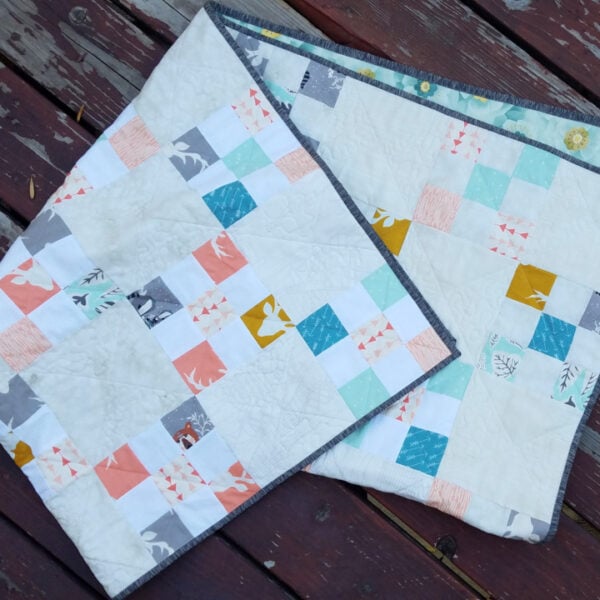Do you give your sewing machine a regular cleaning? Even if it’s in good condition, a dirty machine can cause equipment failure and issues. Visual inspections are key, but why not use a machine cleaning checklist for regular inspections?
Proper maintenance can help reduce costly repairs and help with the stress of future problems. This sewing machine cleaning checklist is the best preventative maintenance checklist out there!

There are so many times when I am sewing away and I am just not quite sure when the last time I cleaned the machine, or took it into the shop for the occasional professional cleaning – until I am switching out the bobbin and finding all kinds of things!
The Importance of Regular Maintenance
Having a preventive maintenance checklist is something that can be used on a daily basis. It’s the only way that I know of to keep your machine in optimal condition and to reduce costly downtime.
The machine cleaning tracker comes in handy when it comes to tracking your schedule, when you cleaned, oiled, changed the needle or took it in. There is even a spot for making notes if something needed help – like the timing or bobbin not working right. At the top, there is a spot to write the machine info so you know which machine you are tracking (I know that we typically have more than one sewing machine).
I hope you find this tracker helpful in your sewing machine maintenance schedule.
Is having a clean machine really that important?
Absolutely. When it comes to the best practices for slowing down machine downtime, a clean machine takes the cake. You need to be sure that you’re taking preventative measures and a proactive approach so that you’re ahead of any potential problems.
Cleaning your machine on a regular basis will help to keep the machine in tip-top shape. You can do this for monthly maintenance as a starting point or start doing this at any signs of damage.
What specific maintenance tasks are important to limit equipment downtime?
To stop potential issues, you need to be sure that your machine is cleaned for optimal performance. This will help keep the machine in good working order, and also give you longer-lasting machine tools.
This well-crafted checklist helps keep track of things to check on a weekly and monthly basis, like cleaning, oiling, and putting in a new needle. There aren’t complex tasks on this list but rather a set of tasks that are simple and easy. to follow.
Set up a routine schedule for cleaning to extend the life of your equipment. Pay special attention to your needles and make sure that you’re also paying attention to manufacturer recommendations to keep your machine in tip-top shape.
Step-by-step checklists like this make the best machine maintenance checklist because they give you space to fill out and alter as needed. This helps to identify any potential hazards in the best ways possible.

Sewing Machine Maintain Tracker
1- Sewing Machine Brand, Model and Weight.
What machine is this? Make sure you fill this out! There are many machines in a quilters room and you don’t want to get them confused when it comes to cleaning and maintaining them. There may be a moment when you don’t remember if it was the Juki that got the last service or the Brother. So, fill this area in to save you some grief later.

2- Date, Professionally Cleaned, Cleaned, Oiled, New Needle
This is the table that you’ll fill out multiple times, depending on the service you do. You can put the date on the side and then check box the ones that were done…. OR you can put the date directly under the item on the list. Either way will totally work.
There is a difference between professionally cleaned and cleaned. Professionally means you paid someone to clean it. You probably drove the machine somewhere and dropped it off for a few weeks. Depending on the machine, this may happen every year, or based on how many stitches or if you are running into issues.
The simple Cleaned spot is for you to mark when you have cleaned the machine. If you took the bobbin out and gave it a good clean out. Got rid of the lint and such. Nothing as deep as the professional, but still something that counts.
You’ll also track when you oiled it (usually it’s the same day as the cleaning) but just in case you are able to track that separately.
New needle will happen at random and usually doesn’t follow a schedule. You can mark down the date here as well.

3- Notes
This area is for you to write down any notes that you would like to track. Did it go into the shop for a specific reason? Skipping stitches, the timing is off or whatever. Maybe you want to write down exactly how to clean or where to put the oil for this specific machine (some machines are different then others). You may want to write down when you bought new bobbins, what size they are, etc.
You will find the Sewing Machine Maintain Tracker in the Quilt Library here. If you don’t have the password to access it (and other printables as well) then sign up here – it’s free for access info.
*It is color, but depending on your printer it may print in color or in grey scale.
More Sewing Machine Posts
- How to Clean Plexiglass Sewing Machine Tables
- I forgot the power cord to my sewing machine
- 5 Minute Sewing Machine Cover Free Tutorial
Becky Jorgensen is the creative quilter behind Patchwork Posse, the Patchwork Planner and her online quilt group Patchworkers Plus. You can find her patterns in books, magazines, and her quilt membership. Gather your quilting supplies, organize your sewing space, explore the process of disappearing quilt blocks, or finish a free quilt pattern. I'll help you use what you have, finish what you start and make your quilting journey fun!
Follow me here: Facebook, Pinterest, YouTube







Thank you for the work sheets and planning sheets. I wish I had them for the last few years. They will come in handy as I rearrange my stash. I have been putting kits together but not complete. A list will give me the heads up before I start. Thank you.